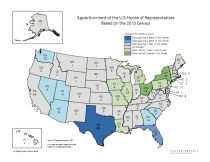Diversity: showing a great deal of variety; (of two or more things) markedly different from one another.

The above definition is about as broad as the number of polling statistics and figures that indicate many trends within US Government. Upon doing some research for an earlier project this semester, I found some interesting information: voter participation in Presidential elections differed between genders and parties; more women than men voted out of the people voting for Obama in the 2008 election while more men than women voted out of those who chose McCain (according to the Rutgers University Center for American Women and Politics). As this may be indicative of how the sexes identify with ideals of certain parties, the gap might also suggest a gap between the political ideals of men and women on the whole. I know, this (like the definition of diversity) is a very broad, sweeping statement. However, when you think about the basic psychological nature of men and women (men thinking in more immediate terms, built for confrontation while women are generally more nurturing and don’t separate personal experience from problems), this might make sense. Now I’m not going to get into a giant debate on psychology, but my question is, is there a right way? Men’s ideals v. women’s ideals? Where do we find the balance between the ever-changing relationship between the ideals of men and women.
Additionally, this year I’ve been taking AP Human Geography (no, I do not study the physical distribution of the human body). While we study trends all around the world, our focus on the United States has opened my naïve peepers to the effects of population distribution on politics. Cycles begin forming as circumstances change. For example, as economic times continue to make just living difficult, people begin moving to more affordable places to live. As seen in the Apportionment map below, Texas, (a notorious “Red” state) has gained four seats in the House of Representatives from population growth alone (and I’m pretty sure that population growth isn’t just from Texans having a whole lot of babies). Similarly, apportionment within states as well as cities and municipalities may skew the representation of minorities in local and large-scale government.

So readers, this is my first challenge to you: what do you think? Given the current state of diversity in politics (you can find some more facts about women in government here: http://www.cawp.rutgers.edu/fast_facts/index.php), where do we go from here? How do we allow for the just, accurate representation of minorities in government? How do we do so and maintain a stable, formidable system? I’d love to hear your thoughts!
Thanks for reading!
Thanks for your post, Sarah – your question “How do we allow for the just, accurate representation of minorities in government?” really got me thinking… especially in light of all the recent news about disputes over Texas’ maps for redistricting going to Federal Court in San Antonio and, later, going to the Supreme Court. In short, the Texas Redistricting cases represent the latest story in a long and sordid history of voting rights violations in Texas.
For me, just representation of minorities in government remains an important policy goal, and the crucial piece of legislation is the Voting Rights Act of 1965 (VRA) – specifically Section 5 of the VRA which requires certain states – mostly (but not all) in the South – to submit their plans for redistricting to the Department of Justice and/or a Federal Court for approval (called “preclearance”). In other words, the Civil Rights Division of DOJ and the Federal Courts remain heavily involved in making sure that state legislatures don’t dilute minorities’ voting power by spreading minority voters among majority-white districts. Every ten years, it seems, a plethora of cases move through the federal courts regarding redistricting, and the bulk of these cases involve jurisdictions that are covered by the preclearance provisions of VRA Section 5 (http://www.justice.gov/crt/about/vot/sec_5/about.php).
What’s also interesting is that Federal judges in San Antonio did not, initially, impose their will on the redistricting process; instead, they have worked to facilitate negotiations between Texas’ Attorney-General’s office and groups like LULAC (lulac.org) who represent the interests of minority voters:
1. The two sides agreed on Texas state Senate maps (see http://www.dallasnews.com/news/state/headlines/20120215-partial-deal-reached-in-texas-redistricting-case.ece)
2. Federal Court ruled on district maps for Congress and Texas House (see http://www.mysanantonio.com/news/local_news/article/Court-releases-new-set-of-redistricting-maps-3367742.php)
The maps for Congress are a big deal because, as you noted, Texas has added 4 new districts through reapportionment. One of the new districts (TX-33) here in North Texas stretches between Dallas and Fort Worth – it’s 66% Hispanic and 17% African American (see map: http://blogs.star-telegram.com/politex/2012/02/court-drawn-congressional-map-released-for-2012-.html).
Thanks again for your post… I appreciate you for beginning an important conversation!!
LikeLike
Representatives to Congress generally represent the interests of the people in their district. Representatives are politicians and ultimately they are accountable to the electorate and dependent on the voters in their district in order to achieve reelection. Election is generally depended upon achieving a simple majority of the votes. Often, special interest groups including religious groups, ethnic groups, economic groups, racial groups and members of political parties will vote in predictable ways. Therefore, the results of an election can be determined by changing the boundaries of Congressional districts. This tactic can effectively change the composition of the electorate. A candidate who has the demographic that is favorable to their reelection is more likely to win the representative seat. Therefore, it can be politically and strategically advantageous to construct or manipulate congressional boundaries that are favorable to ensure election victories over the opposition. In my opinion, politicians should not be able to artificially manipulate the boundaries of Congressional districts in order to gain political advantage.
LikeLike
In response the question question about womens’ ideals vs. mens’ ideals i think the answer would be a mixture of both. Some men may have better ideas than women and some women may have better ideas than men. It is entirley related to the individual and the topic.
LikeLike